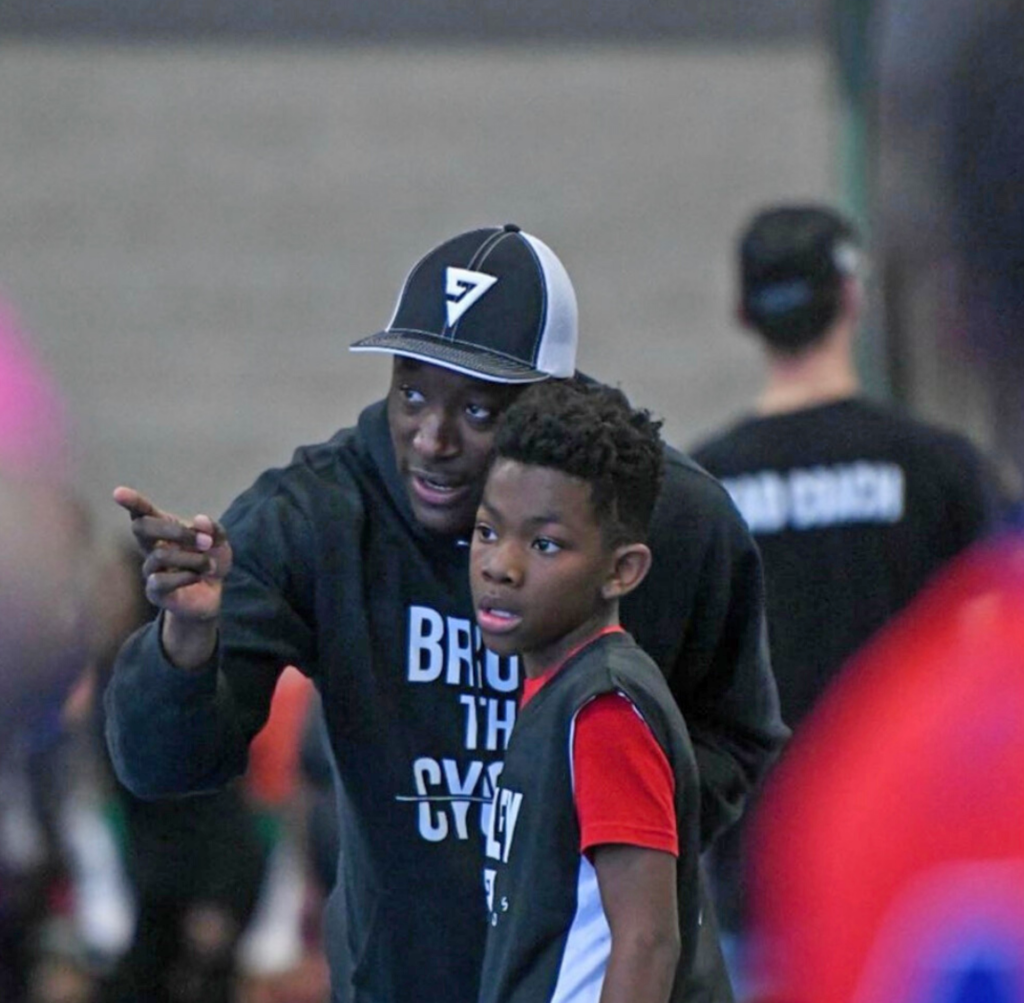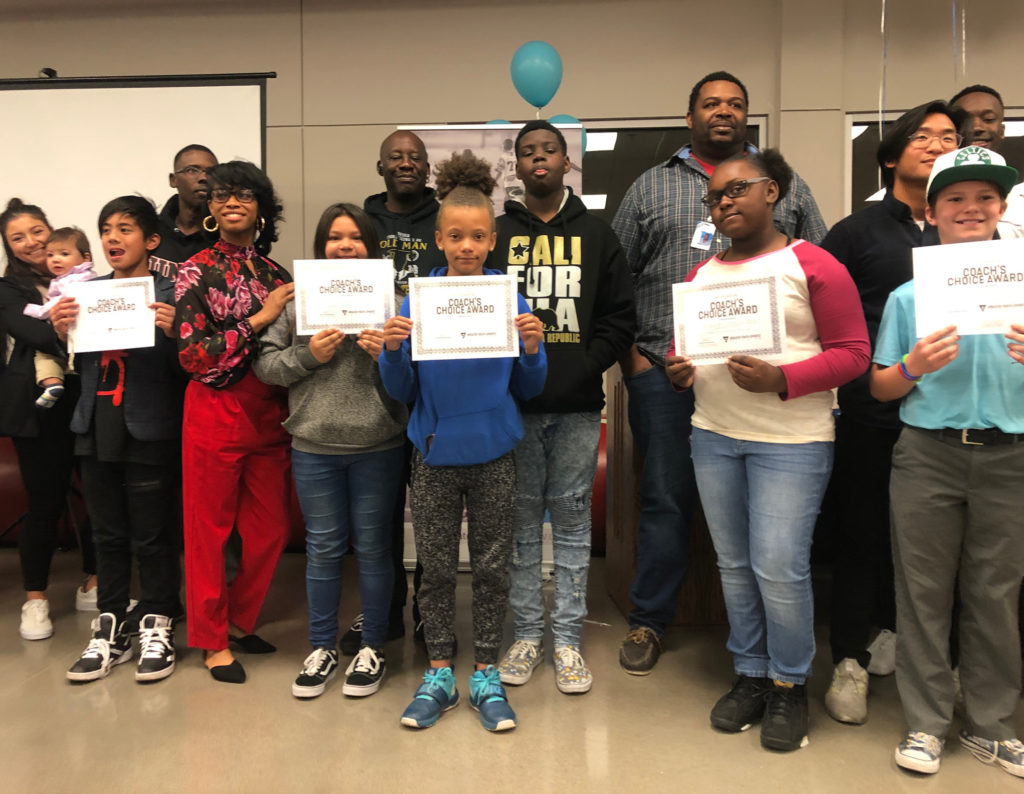 GYSA Blog
GYSA Blog
Youth Sports Healing Trauma and Other Coping Techniques
2020 has been a challenging year to say the least. From the COVID-19 pandemic and all the implications that came with it, to the ongoing systemic racism that plagues our nation, these challenging times have been difficult for many to navigate and hardly improve the mental health of our communities. In fact, some researchers warn that the coronavirus pandemic alone could leave long-lasting emotional trauma (cnbc.com).
The state of our country today certainly could induce trauma, but the U.S. is no stranger to it. An estimated 70% of adults in the U.S. have experienced at least one traumatic event in their lifetime and more than two-thirds of children report one traumatic event prior to the age of 16. Those at even higher risk for experiencing trauma and repeated trauma are those at an economic disadvantage. In fact, the American Psychology Association stated that exposure to trauma is directly related to socioeconomic standing.
Two-thirds of children report one traumatic event prior to the age of 16.
At Greater Youth Sports Association (GYSA) our mission is to support children, particularly those in low-income communities. But how do we provide the additional support needed given all these children are up against. Trauma, whether it comes from within the home or at larger scales, carries many implications, especially for children. Let’s look at these now.
The Implications of Trauma
Anyone who has studied the Vietnam war knows how dangerous the implications of trauma can be. PTSD is one of the most talked about disorders related to trauma, but hand to hand combat is just one of the many ways a person can experience it. Trauma comes in many forms, including abuse, neglect, natural disasters, death, illness, to name a few and can have a multitude of impacts on mental and physical health. Some common symptoms include:
- Depression
- Anxiety
- Low Self-Esteem
- Chronic Pain
- Lack of Self Respect
- Addiction
- Hormone Imbalance
- Muscle Tension
- Immune Dysfunction / Chronic Inflammation
- Cardiovascular Disease
These are just a few of the symptoms of trauma that many children and adults suffer from today.
Childhood trauma is all too common, particularly in low-income households. Keep in mind that trauma literally reprograms and rewires the brain. This is why childhood trauma doesn’t simply fade over time, and often affects a child’s biological, cognitive and physical development and increases risk of lifelong emotional and physical problems.
Solutions to Trauma
But, there is good news when it comes to trauma. The brain’s wiring is not set in stone! There are steps that can be taking to rewire the brain and overcome trauma and many that can be implemented without professional intervention. Please note, in cases of severe trauma it is best to engage with a healthcare professional.
Sports as a Solution

At GYSA we believe that sports can build success on many levels. In addition to the obvious benefits such as improved physical activity levels, sportsmanship and discipline, sports when implemented correctly can also have many mental health benefits. In fact, JAMA Pediatrics published a study showing that people who had experienced traumatic events as children had improved mental health outcomes as adults if they participated in team sports during their adolescence.
Sports can teach many life lessons including resilience, grit and determination. Team sports also allow for improved self-esteem and better social interactions. GYSA conveys these important lessons during practices and games by using Social Emotional Learning (SEL) techniques.
Social Emotional Learning
SEL is the process through which children learn about and manage their emotions, set positive goals, show empathy for others, establish positive relationships, and make responsible decisions.
SEL is important when dealing with trauma because it places strong emphasis on evaluating and controlling emotion. It allows children to look inward and understand their feelings. A common trait in trauma is to bury pain when it occurs, but SEL encourages the opposite. SEL also places major emphasis on establishing and maintaining positive relationships. Relationships can have a major influence on mental health. If surrounded by a strong support system, children are able to handle traumatic situations with more confidence and hopefully avoid long-lasting effects.
The reason GYSA chose to convey these important techniques through sports is because we wanted children to really feel and relate to the message. Nelson Mandela once said, “[Sport] speaks to youth in a language they understand”. We are working to share these lessons in a language our children can easily understand in the hopes that they will continue to use them as they learn and grow.
PERMA
We believe sports have the power to impact and improve the lives of at-risk children across the country, however there are many ways to cope with trauma and maintain happiness. Martin Seligman, the Father of Positive Psychology, came up with a model that delineates what we need to achieve happiness. Striving to integrate the elements of this model into daily life and teaching it to children at a young age may help in reversing the impacts of trauma. The PERMA model is as follows:
- Positive Emotion
This may seem obvious, but positive emotion is powerful when it comes to overcoming trauma and being truly happy. Positive emotion is developed out of optimism, positivity, and enjoyment. Some techniques that can be used to induce positive emotion include participating in hobbies or activities that bring real enjoyment! This might be participating in a sport, going hiking, etc. Find what truly brings you joy and practice it. The key here is not to confuse true joy with pleasure. Another helpful activity for increasing positive emotion, is keeping a gratitude journal. Each day write down all the things you are grateful for. Over time your brain will start to more easily recognize the good things in your life over the bad.
- Engagement
Engagement involves finding activities that demand our full attention. This is that activity that makes “Time Fly” and that puts you in a state of flow, completely and totally focused on that one thing and oblivious to the outside world. This involves trying new things, maybe it’s playing sports, dancing, singing, playing an instrument, etc. Explore different things and don’t stop until you find that thing that you truly love.
- Relationships
Humans need love and social interaction. We are social beings and cannot function at a high level without human connection. Make time to spend with the people who mean the most. Also, make sure that the people you do spend the most time with align with the happiness you want in your life.
- Meaning
Having a purpose in life is necessary for happiness! Unfortunately, our world puts a lot of stock in material wealth, but money is often not the gateway to happiness. Finding your purpose may take time, exploration and experimentation. Ask yourself important questions such as, what would I want to do each day if money were not a factor? How do I wish to give back to my community? What brings me joy? By looking inward and asking deep questions your purpose will start to reveal itself.
- Accomplishments
To truly achieve happiness, it is important to set goals and be ambitious. There is a sense of pride and satisfaction that comes along with achieving our goals. Start by setting small goals and appreciating the small wins as you achieve them. As you grow and flourish in these small goals you will be able to start expanding your goals and dreaming / achieving big.
Press On
The world continues to challenge us in new and unprecedented ways, but it is our job as members of society to offer solutions to these challenges. Mental health is not a conversation to be passed over, especially in such troubling times. We must press on and actively work to improve as individuals and in turn we will be able to improve our communities.
At GYSA we believe sports can heal, teach and prepare our youth for adulthood. This is our solution. This our mission. When we stand together, we all win!








